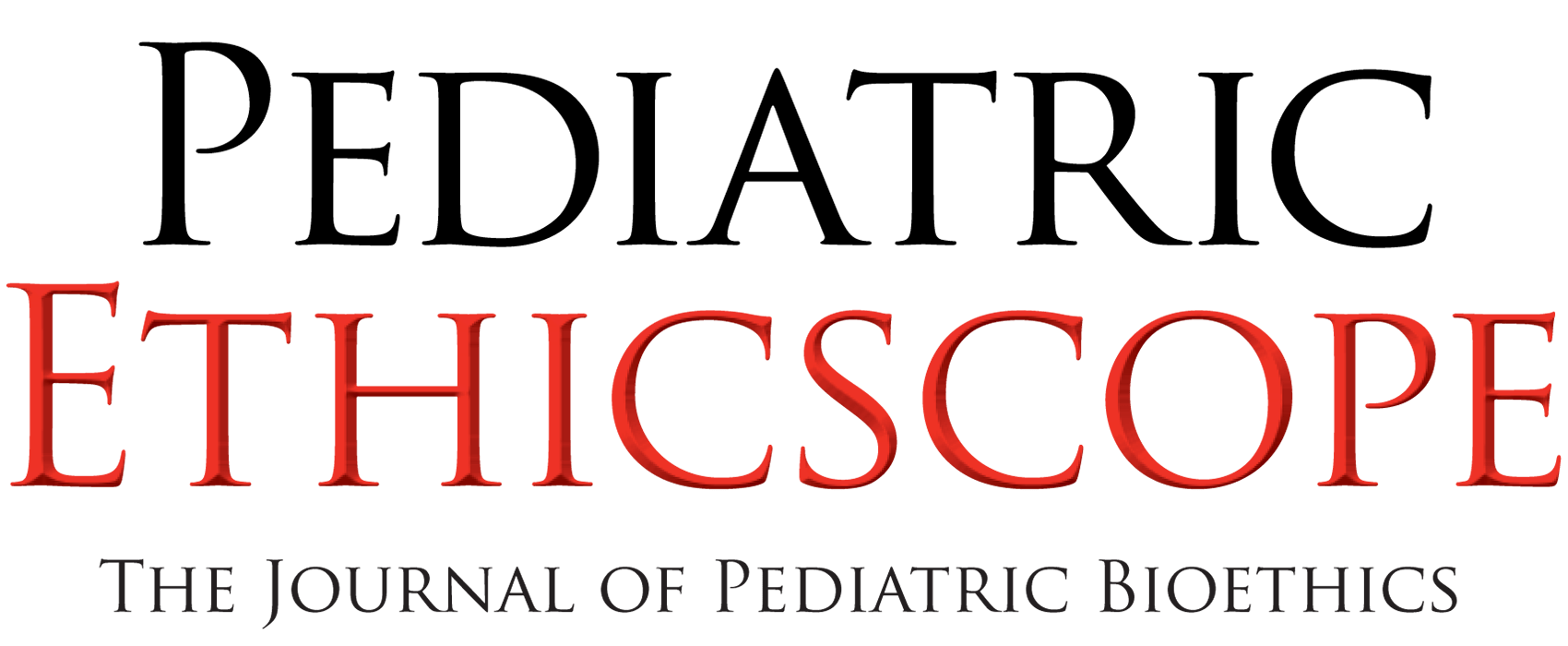
Our second issue since Pediatric Ethicscope’s Fall 2017 launch includes more peer-reviewed articles from a broader range of authors than the last; a trend we hope continues. With this both humbling and heartening response, we have redoubled our efforts to serve the pediatric community with diverse, nuanced perspectives on issues of import in pediatric ethics. We encourage you to submit a manuscript or contact us to discuss a topic; each of the following articles was not too long ago just an outline, abstract, or idea.
We begin this issue with an analysis of the respective roles of diagnosis and prognosis vis-à-vis patient/ family goals in “Embracing Diagnostic Uncertainty.” The authors use a case involving a newborn with an undiagnosed, severe neuromuscular condition to argue, among other things, the patient/family’s goals should in some cases limit our use of diagnostic tests. The NICU setting is continued in “Referral for Extracorporeal Life Support In Newborns With Hypoxic Ischemic Encephalopathy.” The authors argue ECLS and therapeutic hypothermia are examples of life- sustaining therapies that require an ethical framework for shared decision-making with families and medical teams, and share their outreach education in palliative care and bioethics for community neonatal care providers. The “Dialogue with the Ethicist” column in this issue showcases Chris Feudtner’s adroit analysis and enigmatic character foils in service of a nuanced analysis of issues surrounding a particularly vexing pediatric clinical ethics case. Throughout the case discussion, Feudtner offers sage advise for those who perform ethics consultations and insights into the role of the clinical ethicist.
“Transgressing Moral Imperatives” is the result of a two-year research project into ethical stress, virtues, and values, assessing the aforementioned through the study of unprompted expressions in moral language following pediatric death. The study explored both the ethical issues addressed, and not addressed, with traditional ethics education; the latter consisted of two sub-themes: virtue conflicts and value conflicts—both explored in detail. Next, in “The Ethics of Disclosing and Discussing SUDEP with Families of Children Newly Diagnosed with Epilepsy” the authors explore arguments to disclose, not to disclose, and to sometimes disclose the risk of SUDEP to families.
Douglas Diekema’s “Ethical Issues in Genetics Research” begins a trio of research-oriented articles. Diekema argues that while issues in genetics research are not necessarily any different than other research ethics issues, they present in different ways and may be more challenging to manage, using the case of Arizona State University researchers working with the Havasupai Tribe as an example. Continuing the research theme, the longstanding recommendation against performing genetic tests on children that don’t lead to curative therapeutic interventions comes under some challenge in “Doctor, I Want BCRA Testing for My Girl.” The author relays a case in which the longstanding recommendations of several medical societies conflicted with his own ethical reasoning in the particular circumstance he presents. Ending the research ethics trio, and turning more philosophical, a role for double effect reasoning in the moral justification of pediatric experimentation is explored in “The Inclusion of Children in Nontherapeutic Medical Research.” Beginning with the arguments proffered by Paul Ramsey and Richard McCormick, a detailed analytical exegesis of the doctrine of double effect is presented along with an argument for its practical use when certain conditions are met.
Our “Education in Ethics” column presents the Children’s Mercy Bioethics Center’s Certificate Program in Pediatric Bioethics, a nine-month blended learning program that draws students from around the world. An overview of the program, its faculty, and its focus, are presented along with the perspective of a student from this year’s class. The issue concludes with our “Ethics in the Pediatric Literature” section, and we would like to give special thanks to Dr. Brenda Mears, Chairperson of the American Academy of Pediatrics Section on Bioethics, who originally aggregated many of the resources we present.
The new issue can be read online or downloaded as a PDF; see the link below the cover thumbnail image on the website homepage. And as we continue to develop this publication, we appreciate any and all feedback; send your comments to: steti@childrensnational.org. Thank you for reading,
